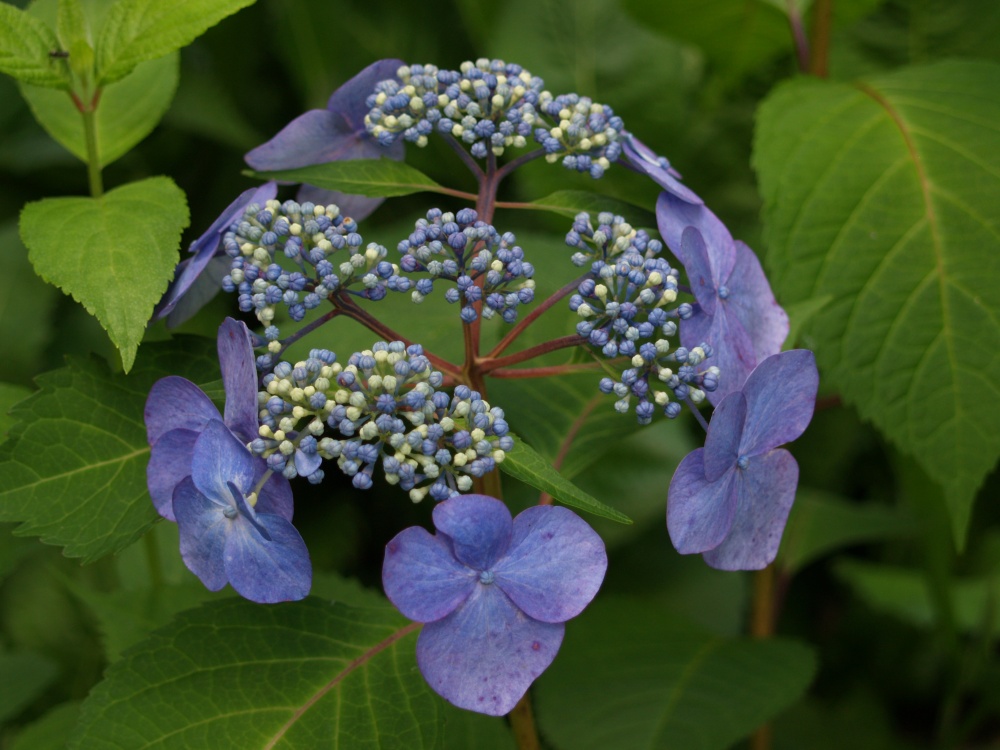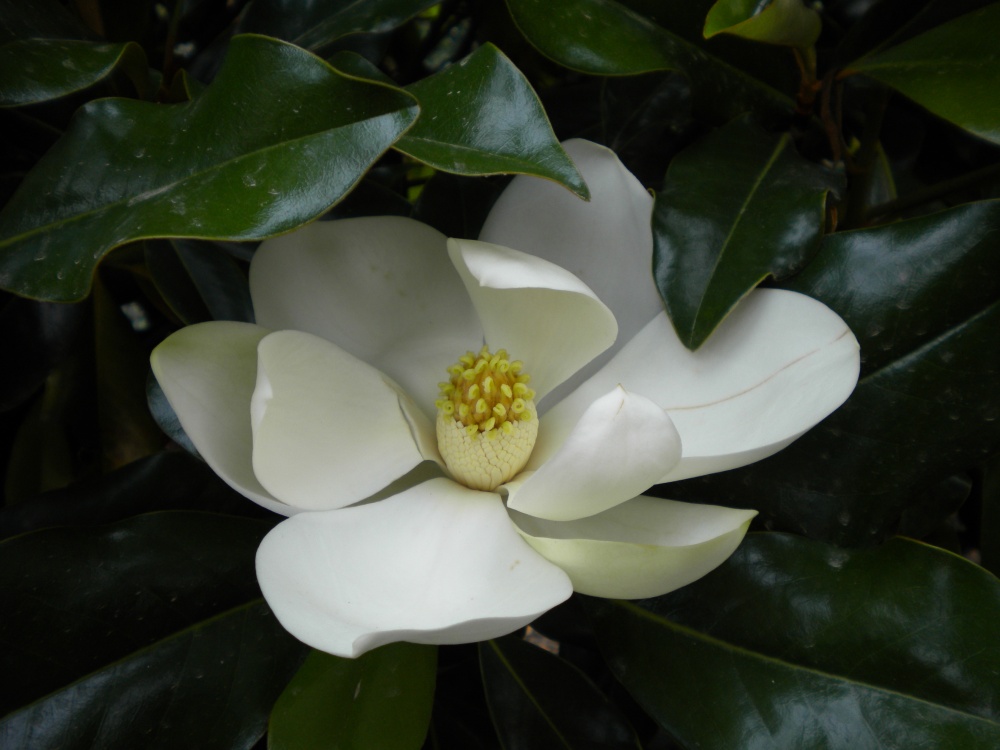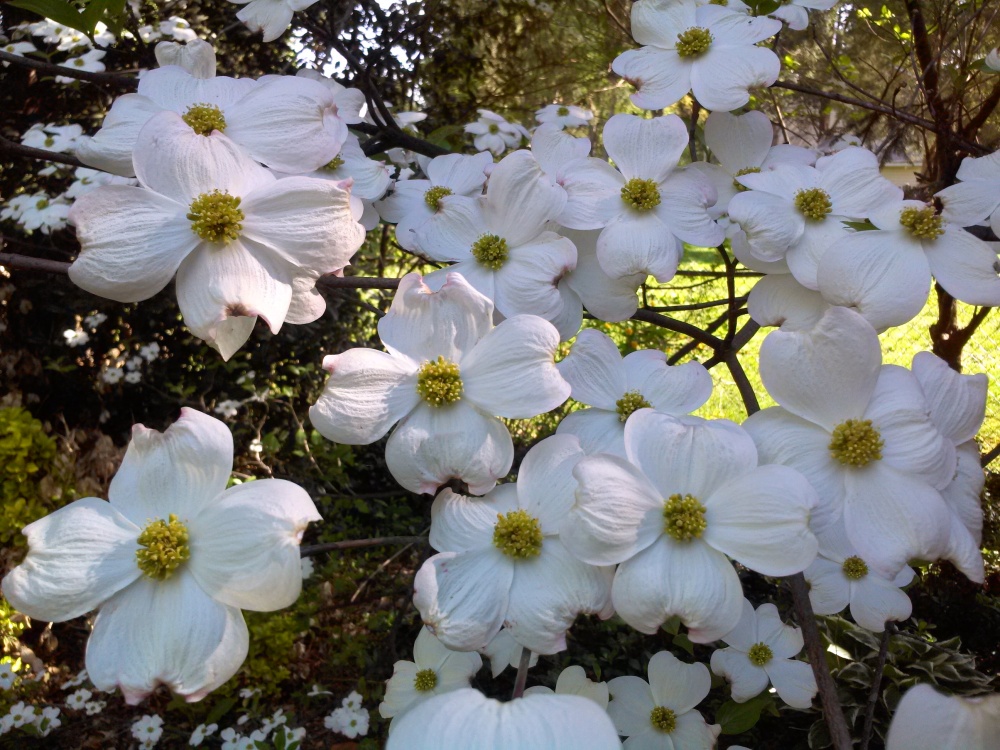There will be few blooms on the azaleas this spring. A few young azaleas have died, and most have suffered considerable damage to their foliage so that they are mostly bare stems with only a few leaves. Unfortunately, I think that this is the good news.
At least most of the azaleas are alive, and though there will be few flowers, they will live to bloom another day. I toggled back and forth in early spring between brave faced optimism that damage from the cold would be less than expected, and what I’m now seeing as the realistic view that there are more problems than expected. Many more, I’m afraid.
Yes, this winter was cold, but not so cold that long established mophead hydrangeas (Hydrangea macrophylla) and even a few roses have been killed to the ground. Now, there are a few leaves sprouting from the base, but ten year old, four feet tall shrubs must be cut back nearly to the roots. After a cold winter I expect some dieback, but more like a few inches rather than feet. The hydrangeas and roses will be fine in the end, I suppose, but unfortunately, this is only where the trouble begins.
Last weekend I was forced to cut out a dwarf hemlock (Tsuga canadenis ‘Lewis’) that was planted twenty years ago, but suddenly turned brown and died as winter turned to spring. I scratched every part of the tree’s bark to see if there was any chance of life remaining, but there was none. The dead needles were shaken loose, and the thick trunk was cut at the ground. This spot as you enter the rear garden was in dire need of something, so a long lobed, red leafed Japanese maple was planted, though this will cause some complications as it eventually grows a bit too large for the space. It’s disappointing, and hard to figure what could have killed the hemlock. Certainly, temperatures were not that cold, but I suspect a more complicated formula of varying between extreme cold and not so cold.
The top two-thirds of the dwarf witch’s broom Japanese maple ‘Shaina’ (Acer palmatum ‘Shaina’ above) has died. Again, the bark was scratched and no life was found, and what would kill the top of the dormant tree is hard to figure. Now that the top has been cut out, the shrubby maple looks quite odd, and since it will require at least several years to fill in adequately, I must decide if the small tree is worth keeping. I’ve kept plants around in the past that were chopped and disfigured, but these were faster growing trees, and the plan was that they would fill in within months, not years.
The paperbushes (Edgeworthia chrysantha, above) are severely damaged. The flower buds are injured whenever temperatures drop near zero, but several nights below zero have killed flowers and branches have died back nearly to the ground. Now, there are leaf buds near the base, and like the hydrangeas, the shrubs must be cut back nearly to the ground. At least the paperbushes are not dead, as I feared. When I planted them I was aware that they were only marginally cold hardy for the area, but in recent years it seems that more have been planted and there was evidence that they were more cold tolerant. Until this winter, though the problem with all the damaged plants is not as simple as just cold damage.
In early May, there are more problems than I care to list, and the final word on two of the garden’s evergreen magnolias is not likely to be decided for another month. Both trees appeared undamaged in early March, then suddenly the long established Bracken’s magnolia turned almost completely brown. Then, to add to the mystery, the ‘Alta’ magnolia went completely brown two weeks later. There’s still some green on both trees, but it’s not looking good, and I expect both large trees will end up having to be removed.
There’s not really any way to verify, but I suspect the problem has to do with fluctuations in temperatures through the winter, particularly in February and March. My recollection is probably similar to everyone else’s, that were no warm days this winter, but in fact after every episode of snow, ice, or sub-zero temperatures there were a few day when temperatures were not so bad. Often, the ground was snow covered during the not-so-cold days, so the days didn’t seem so pleasant, but the fluctuating temperatures in late winter cause more damage than the cold alone.
Now, the garden is not exactly a disaster, but it’s quite disappointing when long established trees and shrubs perish, or are severely damaged so that they must be hacked back to a fraction of their size. In fact, the paperbushes were due for radical pruning as they were thoughtlessly encroaching on neighboring shrubs, but I dithered and delayed and would probably have avoided this for another year or two. I certainly would not have chopped three feet off the ends of the shrub, but now this is done, and spring is here, so the time is right to move along.
I sympathize with you. I’m still trying to figure out what’s still alive in my garden. I know I’ve lost a hellebore and some ivies (of all things!). Two of my hollies are severely burnt. What will this summer look like?
Now, I’ve cut back the hydrangeas, roses, and paperbushes, the dead gardenias have been discarded and I’ve begun planting replacements. I’ve published my sob story, and I’m on the road to recovery. I won’t say that there will be no signs of problems by mid summer, because if the two magnolias must be removed this will leave a couple pretty big holes. But, in recent years there have been other weather events that have toppled trees that are even more critical as focal points in the garden, and I’ve moved on, so the same will happen this year.
Most of my plants are suffering too, but I know what the problem is – a fungus. One characteristic is that the plants look like they are starving for water, with the leaves turning brown, often from the tip back.
I don’t know if you have the tools to do so, but if you can, you might want to cut a 1/8″ twig from an ailing plant and examine its surface with a 400x hand-held microscope. You might also cut the twig with a razor and look at its cross-section. In my case, all my ailing plants showed that the nutrient transporting phloem layer under the bark was pretty much eaten away by this fungus. The bark outside showed numerous fungal fruiting bodies. After seeing this evidence, it didn’t surprise me that my plants were sick.
I am dealing with the same dieback on my Edgeworthia chrysantha. We had an ice storm last winter and it was uncharacteristicly cold in the PNW. There is one branch that is not affected at all, but the rest shows no sign of life. It is a fairly large plant ( 12 years old), did your Edgeworthia chrysantha recover after you cut it back?
As I recall, three edgeworthias were about six feet across. After three nights below zero, the coldest at seven below, they were pruned down to three feet. After spring growth, the damage was still evident, but they grew substantially. By the third year, all were back to six feet, and now they are at least twenty feet across, in need of a serious cutback. The difference in the NW is your winter temperatures have varied from mild to cold while we do not have this much variation. With only one branch showing signs of life, it is likely that other parts have died.